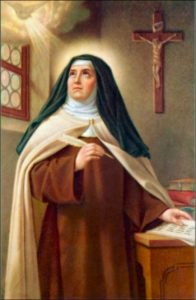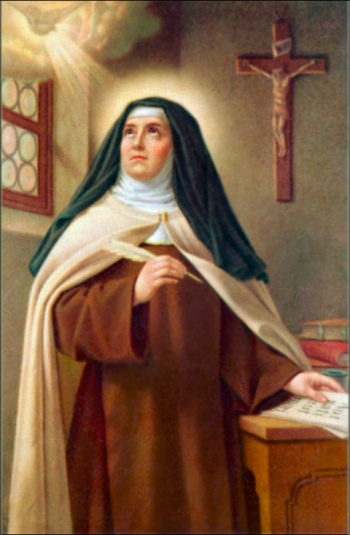Last Updated on July 6, 2017 by Editor
By A.J. VALENTINI
The Feast of Our Lady of Mount Carmel first took place between 1376 and 1386 as a celebration of the Carmelites — an ancient holy order dedicated to the veneration of the Blessed Mother — on obtaining recognition of its name and constitution from Pope Honorius III on Jan. 30, 1226.

It was decided to designate the feast day on July 16 because it was on that day that St. Simon Stock had a vision of the Blessed Virgin. She told him that if the Carmelites wore their apron or habit in faith, that she would care for them. Through faith and persistence, the Carmelites endured persecution and displacement, and the tradition of the brown scapular, as a representation of the Carmelite habit, took hold.
Several notable Catholic saints were of the Carmelite order. Here are three:
St. Teresa of Avila is considered a doctor of the universal church. She entered a Carmelite Monastery at age 20 in 1535. For years she felt she was unworthy to address prayers to God. She had a series of grave illnesses and attributed her survival to St. Joseph.

At 41, she was convinced to return to prayer but also became acutely aware of the worldly focus of her fellow Carmelites (nuns from rich families even had servants). In her late 40s she founded a new convent dedicated to St. Joseph, which focused on prayer and a more spartan life.
She eventually established a community of friars as well. Over the next 20 years she founded 16 monasteries. Her writings and teaching are considered major contributions to Catholic theology.
St. Thérése of Lisieux was proclaimed a doctor of the church in 1997 and is an example of humility and sanctity.
Born the last of nine children, she lost her mother at an early age. From the time of her First Holy Communion she dedicated herself to the Holy Mother. At 10 years old she became deathly ill and her father had a novena of Masses offered for her recovery.

She joined the Carmelites at 15 years old and was assigned the most mundane of tasks in the convent. Gravely ill with tuberculosis, she said upon her death she hoped to “loose a shower of roses in the form of favors and miracles from heaven.” When she died at age 23, her life of humility, prayer and service became a model for other Christians.
St. John of the Cross, priest and doctor of the church, was born to a wealthy Spanish father who had been disinherited because he had married a poor orphan.
The father died when John was very young leaving his son in the care of his destitute mother. Since he had no sponsor, John could not learn a trade and earned a living working in a plague hospital. When he was 18 he began to study with the Jesuits, and at 21 he offered his services as a lay brother to the Carmelite friars and eventually became a priest.
He already was teaching while studying at the University of Salamanca. In 1567 he met St. Teresa of Avila who convinced him to help her reform his order.
He became the first prior of the “Barefoot” Carmelites. Because of opposition from elder friars he was condemned as an apostate and was imprisoned. While there he constantly wrote material that eventually would become one of his greatest contributions to posterity.
He escaped from imprisonment but was later persecuted again, only strengthening his resolve. Eventually, his order received recognition and after 15 years of leadership he died.
